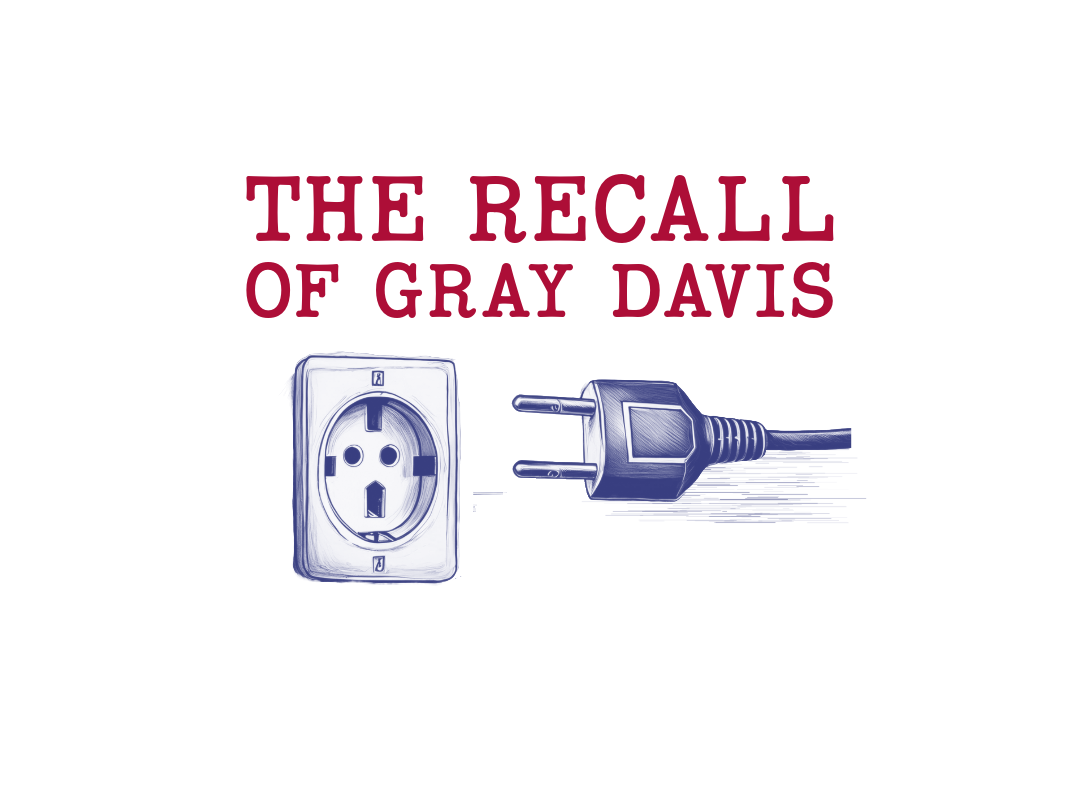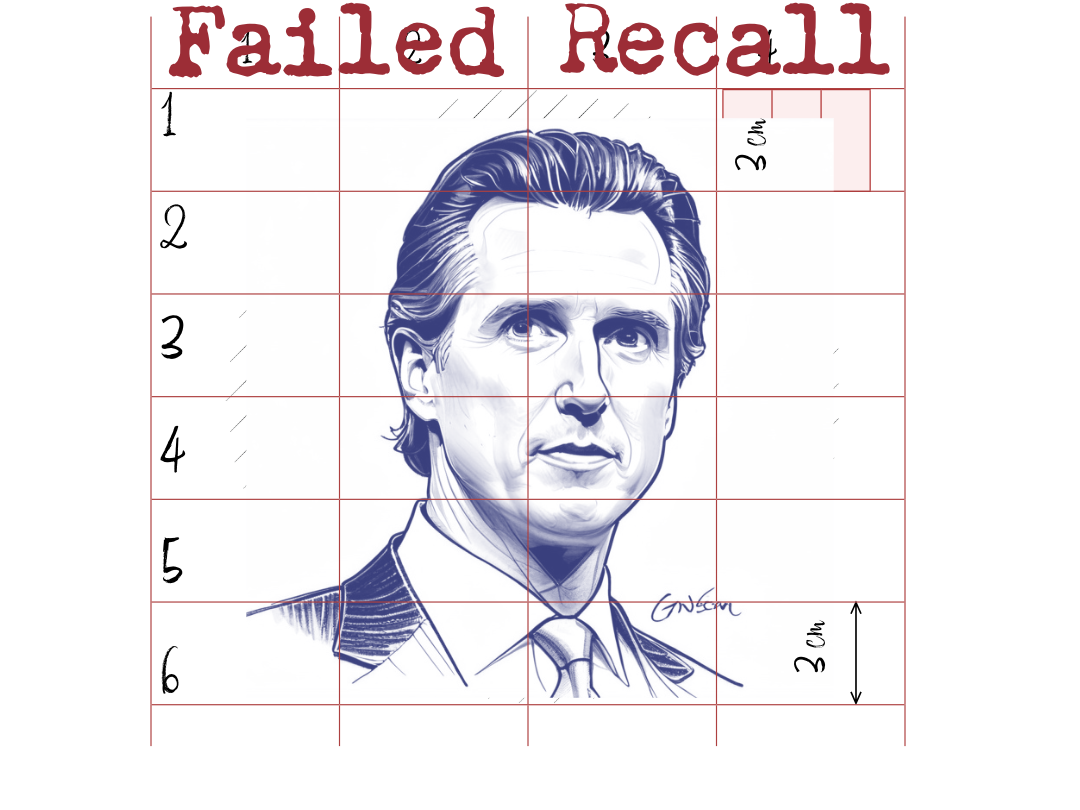The Power of Words in Shaping America’s Future
November 15, 2024
In the high-stakes world of American politics, the power of rhetoric is undeniable. As the two prominent figures in the 2024 presidential race, Donald Trump and Kamala Harris used their speeches to stake their claim to the nation’s future, each wielding their words as tools of persuasion, division, and unity. Trump’s fiery, populist appeals contrasted sharply with Harris’s call for unity and justice, creating a stark divide in their approaches to leadership. As the election results unfolded, it became clear that both leaders had harnessed the full force of their rhetoric to engage their respective audiences. But which of them truly held the stronger message? In this article, we take a closer look at the rhetorical strategies of both candidates, examining how their words resonate with their supporters, challenge their opponents, and define the future of America.
Let's dive into the comparison of the rhetorical styles of Donald Trump and Kamala Harris, highlighting their key elements, strategies, and the impact they have had on American politics.
Contextual Framework
The two speeches are delivered under contrasting circumstances and exhibit markedly different approaches to addressing societal issues. The Harris's speech tackles global and long-term challenges, such as climate change, technological advancements, and international cooperation. However, it lacks a direct connection to immediate domestic concerns, such as inflation, unemployment, or crime, which are critical to voters. In contrast, Trump’s speech is firmly grounded in contemporary economic and social concerns, including inflation, immigration, and energy costs. His framing ensures a direct resonance with his audience's daily realities, leveraging the immediacy of these issues to build a sense of urgency.
Speaker’s Profile and Audience Consideration
Kamala Harris presents herself as a visionary leader with a technocratic and global perspective. Her appeal is primarily intellectual, targeting long-term thinkers and globalists. However, this approach risks alienating individuals who prioritize short-term solutions to immediate problems.
Trump, on the other hand, adopts the persona of a populist and pragmatic leader. He positions himself as a relatable champion of the "forgotten" American, strategically blending nostalgia for past successes with a forward-looking promise of renewal. His speech carefully balances energizing his loyal base while attempting to sway swing voters by addressing their immediate frustrations with actionable solutions.
Core Message and Themes
Harris's Speech: The themes are broad and aspirational, focusing on systemic challenges like climate policy, social justice, and international cooperation. While these are significant, they feel disconnected from the immediate struggles of ordinary citizens, such as high living costs, stagnant wages, and community safety.
Trump’s Speech: The core message is grounded in direct action, promising tangible benefits such as tax reductions, job creation, energy independence, and strengthened border security. His themes of renewal and restoration are immediately relatable and speak to the frustrations of voters grappling with economic and social challenges.
Trump successfully ties his policy proposals to his previous tenure, creating a compelling contrast between his perceived success and the shortcomings of his opponents.
Donald Trump: BOLD, Populist and Defiant
Trump’s rhetoric is rooted in a populist framework that emphasizes the idea of the "common man" versus the political elite. He positions himself as an outsider who represents the will of the people, particularly those who feel disenfranchised by the traditional political establishment. In his speeches, Trump often uses phrases like “I’m fighting for you” and “They don’t care about you,” which resonate deeply with his base, making them feel understood and empowered.
Trump's speeches are often combative and filled with direct confrontations. He rarely shies away from mentioning political opponents, the media, and even allies when necessary. This creates a stark "us vs. them" mentality, painting the establishment as corrupt and out of touch with ordinary citizens. His ability to criticize his opponents, as seen with his use of nicknames like "Crooked Hillary" or "Sleepy Joe," plays a crucial role in energizing his supporters. The aggressive nature of his rhetoric appeals to voters who are frustrated with the status quo and are looking for someone who will take on the establishment without hesitation.
Trump often uses simple, repetitive language to drive home his points. His phrases are short, impactful, and memorable. This allows him to communicate complex ideas in a way that is accessible and easily understood by a wide audience. His rhetorical devices often include repetition (e.g., “Make America Great Again”) and exaggeration (e.g., “The greatest economy ever”), which makes his message resonate deeply with his base.
Trump also often uses rhetoric that evokes thoughts of the future, such as concerns over immigration, crime, and economic decline, alongside a nostalgia for the past. He frequently frames his vision as one of restoration—bringing America back to a time of greater prosperity and security. For instance, his constant mention of “bring jobs back” or “make America great again” evokes a sense of loss and the desire for a return to a golden age that many of his supporters feel has been stripped away by globalization and technological change.
His speeches often reflect his frustration with the current economic and political climate. He critiques institutions such as the media, the federal government, and the judiciary, which he perceives as contributing to the nation's struggles. By positioning himself as an outsider willing to confront these perceived inefficiencies and injustices, he seeks to connect with voters who feel left behind by the system. Trump's rhetoric resonates with those who believe that the existing political structure has failed them, and Trump portrays himself as the leader capable of shaking up the status quo to bring about change.
KAMALA HARRIS: OPTIMISTIC, AVOIDANCE, DETACHMENT
Kamala Harris’s speech centers on unifying themes and a forward-looking vision, emphasizing equality, justice, and systemic reform. She frames her rhetoric around shared American values, positioning herself as a leader committed to addressing long-term societal challenges such as climate change, racial equity, and global collaboration. Her tone conveys optimism, compassion, and a call for collective action, appealing to a diverse audience while stressing the importance of democracy and inclusivity. By focusing on principles rather than divisive rhetoric, she seeks to inspire trust and project stability.
Harris employs strategies that highlight the importance of unity and bipartisanship. She avoids direct attacks on opponents, opting instead to present an image of progress and cooperation. Her rhetoric weaves narratives about historical American resilience, emphasizing the nation’s capacity for change and progress. While she touches on pressing economic and social issues, her focus remains on systemic, long-term solutions, attempting to elevate the discourse above immediate political conflicts. This approach aligns with her goal to appeal to a broad audience, including moderates and those disenchanted with polarizing politics.
However, her speech’s broader thematic focus occasionally shifts attention away from immediate economic concerns, risking a perception of detachment from the daily struggles of many Americans. While her rhetoric is inclusive and thoughtful, it lacks the emotional intensity and specificity needed to fully engage or energize certain voter demographics. By prioritizing a visionary tone over detailed policy solutions, Harris underscores her emphasis on long-term change but may inadvertently miss opportunities to connect with voters seeking tangible, actionable commitments.
Impact of Trump’s Rhetoric
The impact of Donald Trump's rhetoric is profound, multifaceted, and polarizing. It influences political discourse, voter behavior, and public opinion in several significant ways:
Mobilization of Support: Trump’s rhetoric is designed to energize and unify his base. His use of simple, direct language, memorable slogans, and emotionally charged themes like “Make America Great Again” and “America First” creates a strong sense of identity and loyalty among his supporters. By framing issues in a way that resonates with their frustrations—such as economic insecurity, immigration concerns, and distrust of the political establishment—his rhetoric motivates voter turnout and grassroots activism.
Polarization and "Us vs. Them" Dynamics: rump frequently employs polarizing language that creates a stark division between his supporters and opponents. By framing himself as the voice of the “forgotten American” and portraying elites, the media, and political opponents as adversaries, he fosters an “us vs. them” narrative. While this strategy strengthens cohesion within his base, it also deepens societal divides and fosters political tribalism.
Simplification of Complex Issues: Trump’s rhetoric simplifies complex political, economic, and social issues into digestible, relatable messages. For example, he frames trade policy through terms like "winning" or "losing," making abstract topics accessible to a broad audience. However, this simplification can also lead to misinformation or a lack of nuance in public understanding of policy.
Emotional Appeal and Identity Politics: By appealing to emotions like pride, fear, and anger, Trump’s rhetoric taps into deep-seated feelings of disenfranchisement and nostalgia for an idealized past. His ability to connect emotionally reinforces his audience’s trust and belief in his leadership. This emotional resonance often overrides fact-based critique, creating a strong sense of personal loyalty.
Influence on Political Norms and Media: Trump’s rhetoric challenges traditional political norms, using informal, confrontational, and hyperbolic language. His willingness to openly criticize opponents, use derogatory nicknames, and make controversial statements has reshaped political communication. It has also created a media spectacle, drawing unprecedented attention to his messaging and ensuring dominance in news cycles.
Delegitimization of Opponents and Institutions: Trump frequently uses rhetoric to delegitimize critics, institutions, and processes that challenge him. Terms like “fake news,” “rigged election,” and “witch hunt” erode trust in the media, judiciary, and electoral system. While this bolsters his narrative among supporters, it also undermines democratic norms and institutions, potentially destabilizing public trust.
Amplification of Populism: Trump’s rhetoric amplifies populist themes by emphasizing anti-elitism, national sovereignty, and economic protectionism. This has contributed to the global resurgence of populist movements, influencing political landscapes beyond the United States. His rhetoric inspires other leaders to adopt similar communication strategies, reshaping international politics.
Economic and Cultural Reframing: Trump’s rhetoric reframes economic and cultural debates in ways that resonate with working- and middle-class voters. By focusing on job creation, energy independence, and immigration, he aligns himself with perceived threats to economic and cultural stability. This framing shifts public discourse toward issues of national identity and economic protectionism.
Long-Term Impacts on Political Discourse
Trump’s rhetorical style has lasting implications for American politics:
Normalization of Hyperbole and Misinformation: His frequent use of exaggerated claims and repetition of unverified information has normalized the spread of misinformation in political discourse.
Erosion of Civility: His confrontational tone has contributed to a decline in political civility, making contentious and personal attacks more commonplace.
Empowerment of Outsider Candidates: By challenging traditional political norms, Trump’s rhetoric has paved the way for non-establishment candidates to gain traction.
IMPACT ON HARRIS'S RETHORIC
Kamala Harris's rhetoric, when compared to Trump's, has a distinctly different impact, reflecting a more traditional political approach with broader themes and a focus on inclusivity. However, its effectiveness and influence are tempered by certain limitations. Here’s an analysis of the key impacts of her rhetorical style:
Appeal to Broader Audiences: Harris's rhetoric aims to address a wider range of voters by focusing on themes like equality, justice, and long-term systemic change. By emphasizing collective well-being and shared responsibility, it seeks to create a unifying message that resonates across political, social, and economic divides. However, the lack of specificity and immediate, tangible proposals may dilute its impact, particularly among audiences seeking actionable solutions to pressing issues.
Emphasis on Idealism and Vision: Her rhetoric focuses on lofty ideals and future-oriented goals, fostering a sense of hope and moral responsibility. While this can inspire and mobilize those who align with these values, it risks coming across as disconnected from the immediate challenges many voters face, such as economic instability, inflation, or crime. This detachment may alienate certain segments of the electorate who prioritize short-term, concrete outcomes over long-term vision.
Intellectual and Policy-Driven Tone: Harris often employs an intellectual tone, discussing complex systemic challenges such as climate change, social inequality, and global cooperation. While this appeals to educated and policy-oriented voters, it may not resonate as effectively with audiences seeking simpler, more relatable messaging. This approach risks creating a perception of elitism or detachment from the everyday concerns of working-class citizens.
Limited Emotional Resonance: Compared to Trump’s emotionally charged rhetoric, which leverages anger, fear, and pride, Harris's rhetoric is less emotionally engaging. It relies more on rational appeals and shared values, which can inspire trust among policy-driven voters but may fail to evoke the strong emotional connection needed to energize a broader base. Without significant emotional resonance, it may struggle to generate the same level of voter enthusiasm.
Focus on Unity and Inclusivity: Harris’s rhetoric strongly emphasizes unity, bipartisanship, and collaboration, seeking to bring people together around common goals. This is a stark contrast to Trump’s polarizing, “us vs. them” dynamic. While inclusivity has the potential to heal divisions, it may also lack the urgency and decisiveness needed to address deeply entrenched conflicts or inspire a sense of immediate action.
Risk of Deflection and Vagueness: Harris's tendency to shift focus from immediate economic challenges to broader systemic issues risks being perceived as deflection. While the intention may be to provide a holistic view of the country’s future, this approach can seem out of touch with voters who are more concerned about day-to-day struggles like rising costs, housing, and healthcare.
Impact on Political Norms: Harris's rhetoric adheres to traditional political norms, reinforcing the value of civility, decorum, and compromise in public discourse. This stands in contrast to the confrontational and hyperbolic style that has gained traction in recent years. While this approach preserves institutional integrity, it may lack the dynamism needed to compete in an increasingly polarized and fast-paced political environment.
Limited Mobilization Potential: Without strong emotional appeals or tangible calls to action, Harris's rhetoric has limited potential to mobilize voters on a large scale. It is more likely to appeal to established supporters and policy-focused individuals rather than engaging undecided or apathetic voters. This may hinder its effectiveness in driving high voter turnout.
FINAL THOUGHTS: TRUMP VS. HARRIS
The disconnect between Kamala Harris' promises and the needs of voters becomes particularly evident in the context of the current unstable economy and rising prices at the time of the elections. As a key member of the Biden administration, which has been in power during a period of soaring inflation, supply chain disruptions, and economic instability, Harris faces significant scrutiny from voters who are grappling with these pressing issues.
Donald Trump’s rhetoric in the 2024 election capitalized on a deep connection with voters’ immediate frustrations, offering a message of direct action and national renewal. By focusing on issues such as inflation, energy independence, and immigration, Trump effectively positioned himself as a pragmatic leader addressing the everyday struggles of Americans. His emphasis on economic revival and promises of tax cuts, job creation, and reduced government inefficiency resonated strongly with working-class voters, especially those hit hardest by the current economic challenges.
Many voters are focused on pocketbook issues, and their concerns about economic recovery, job security, and inflation outweigh broader, long-term policy promises. As the vice president who has been closely tied to the Biden administration's handling of the economy, Harris may struggle to distance herself from the criticisms of current economic policies. The perception that the administration has failed to bring down inflation or provide sufficient relief to working-class families can make her promises about healthcare or climate change feel distant or out of touch with voters' immediate needs.
Additionally, her advocacy for ambitious social programs may be seen by some as unrealistic or costly, given the ongoing economic challenges. Voters who are struggling with higher living costs may view her proposals for increased government spending with skepticism, fearing that such policies could exacerbate inflation or lead to higher taxes. For voters in swing states or those who have felt the impact of rising prices most acutely, Harris' speeches may feel disconnected from their lived experiences, where immediate financial relief and a more stable economy are top priorities.
The 2024 presidential election underscored a stark contrast in rhetorical styles between Donald Trump and Kamala Harris, reflecting their divergent visions for America’s future. Trump’s rhetoric, steeped in immediacy and pragmatism, directly addressed voters’ frustrations with economic instability, high inflation, and concerns over immigration and energy. His appeal to nostalgia and promises of renewal resonated deeply with those yearning for a return to perceived past successes. Trump’s ability to simplify complex issues into relatable terms allowed him to connect with voters on an emotional level, energizing his base and mobilizing support. However, his polarizing “us vs. them” approach and combative tone raised concerns about his capacity to unite a divided nation and address broader systemic challenges.
Copyright Notice & Intellectual Property Rights
This article is the intellectual property of Vesselina Davenport and is protected by copyright law. All content, including text, analysis, and multimedia, is owned by the author unless otherwise indicated. Unauthorized reproduction, distribution, or transmission of any portion of this article is strictly prohibited without prior written consent from the author, except in cases of non-commercial use permitted under fair use provisions.
Citations and Sources
This article includes references to publicly accessible information, including the Roll Call transcript of Donald Trump’s campaign rally speech at Madison Square Garden on October 27, 2024, found at Roll Call Transcript. All external sources have been accurately cited, and complete citations are available for verification. If you would like to reference this article, please attribute it to the original author and link back to the full content.
Fair Use Disclaimer
Any third-party quotes, excerpts, or materials included in this article are used for educational and informational purposes under the fair use doctrine. All third-party content remains the property of its respective copyright holders.
Permission for Reuse
Portions of this article may be shared or quoted with appropriate credit to the author and a link to the original content. Any commercial use or modifications require prior written consent from the author.
Article Updates
This article may be periodically revised. Updates or modifications will be reflected on this page. Please check back to access the most current version.
All Rights Reserved | Vesselina Davenport | 2024








